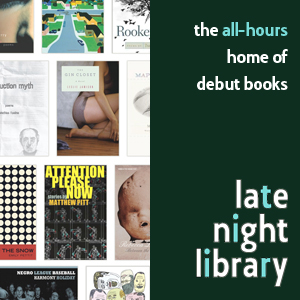 Letter from Oaxaca
Letter from Oaxaca
One Mile to Midnight

Poet and teacher Sara Sutter is spending a year teaching in Oaxaca, Mexico. This is the first of a series of columns she will write about poetry and her experiences in Mexico.
By Sara Sutter

Aurora Borealis Lane, Arctic Boulevard, Ship Avenue, Orca Street, Eagle Street, Redwood Street, Firewood Street, Northern Lights Boulevard. We pass and frequent espresso carts, human petrol, in dirt lots. We pass a fourteen-wheeler with the red words AIR LIQUIDE flanking its sides. T supplies the fact that Alexander the Great wept when his empire grew so vast that there were no new worlds to conquer. In most any American strip mall, I’d share A the G’s dismay at the utter saturation of civilization, but we’re headed to Denali State Park to backpack along the edge of the tundra. Tundra. The word suggests remote, arctic, extrasolar. A descendant sentiment of conquest accompanies our journey. We listen to a Radiolab podcast about chance in our small world: two British girls named Laura Buxton. When one Laura Buxton was ten, she sent a red balloon with a note of her name and place into the sky only for it to land in the yard next door to ANOTHER LAURA BUXTON, also ten years old. We stop at a look-out lip across from the fog that covers Mount Denali. A U.S. Forest Service sign explains the peak’s namesake(s): Mount Denali is Mount McKinley. Denali means “The High One” in native Athabascan. “McKinley” was the name of President McKinley who passed the Gold Standard Act in 1900. Denali/McKinley is the largest peak in North America. The third highest on the planet. Most often cloud-shrouded: It comes out 30% of the time or it can be seen 30% of the time.

In the lower, more temperate, berry-and-stream-garlanded forest, there’s plenty of fireweed. A fuchsia erection. E explains that it blooms from the bottom up: as the tip blooms, the bottom blooms wither into cotton, a winter augur. I ring my singular jingle bell to announce to any salmon-palming grizzlies or salmonberry-gorging cubs: We’re here. After two steep miles, the tundra’s extended perspective relieves my bear fear. They would have to be desperate to hunt here. There is no grass, only dirt and a thick carpet of something like lichen-algae. We sink as we step. Our arm tattoos further ornament our tanks and quick-wick slacks paired in unusual complements—mustard and grape, tangerine and topaz—self-conscious, fabulously-alienated travelers. Mosquito bites red-cobble our exposed skin. The mosquitoes bite through our clothes too. Before sleep, I catch them one by one in my hand, opening it to see the crumply tinsel corpse and (my own) blood streak. I imagine a claymation tundra over which two claymation Laura Buxton ghosts roam.
After the second Laura Buxton’s neighbor found the red balloon, he brought it to her. The Laura Buxtons met each other and have been friends ever since. They are eighteen and on Radiolab with nearly identical voices. As Jad tugs at the threads of the story, we learn that the girls were not both ten when they met. One was almost ten, a detail changed to tidy the account, to wield a more potent claim on coincidence. Don’t we all want to believe in chance? How K vacationed in Costa Rica for a break from her life in San Francisco only to foster soul-friendships with her Potrero Hill neighbors in the Costa Rican jungle. The discovery of parallel courses, a little raft among the immense and uncertain currents of one’s life. A gesture of intimacy across distance, I read The Solace of Open Spaces from someone I could love but will soon leave. There are over 2000 mosquito species and only females bite. They use human blood to make their egg sacs, which can contain over 300 eggs that are lain upon still water in the shapes of rafts. How common, in England, is the name Laura Buxton? The weather turns and turns and turns. From sun to Scottish mist to snow lakes—a plethora of weathers. When the forecast shows snow in Pennsylvania, my family says they’re calling for weather. A noun and verb. The conditions of frosty eyelashes bring us down from the tundra and within fifteen miles of the freezing plains severe wild fire warnings shout orange from the highway’s shoulder. The woods along the road have been blackened to a fire line to pause the blaze. A homeopathy. An inoculation? A man at the gas station says the fires are all around us, then winks as he hands me my change.

In a Fairbanks gallery, we see an exhibit of felt objects, objects made of felt. Utility items: pencils, college-ruled stationary, painter’s tape, light bulbs. Savvy cartoons, joyful and familiar, interesting because they seem post-utility, provoking wonder at the (mundane) instrument. A great-niece to Claes Oldenberg. We drive to the wildlife preserve after hours though it is day-bright and stand behind the chain-link. We holler at the muskox at rest. They stand, look, eat hay and lie again. A pair of sandhill cranes in the neighboring field calls back. Or call. To each other. They hover above the grass with their wings outstretched and their back and forth culminates in a synchronized, dolphinesque, coily exclamation. How queer, in the older sense of the word, their language and mating seems to us, three humans together for five days without much touch and plans not to reproduce.





